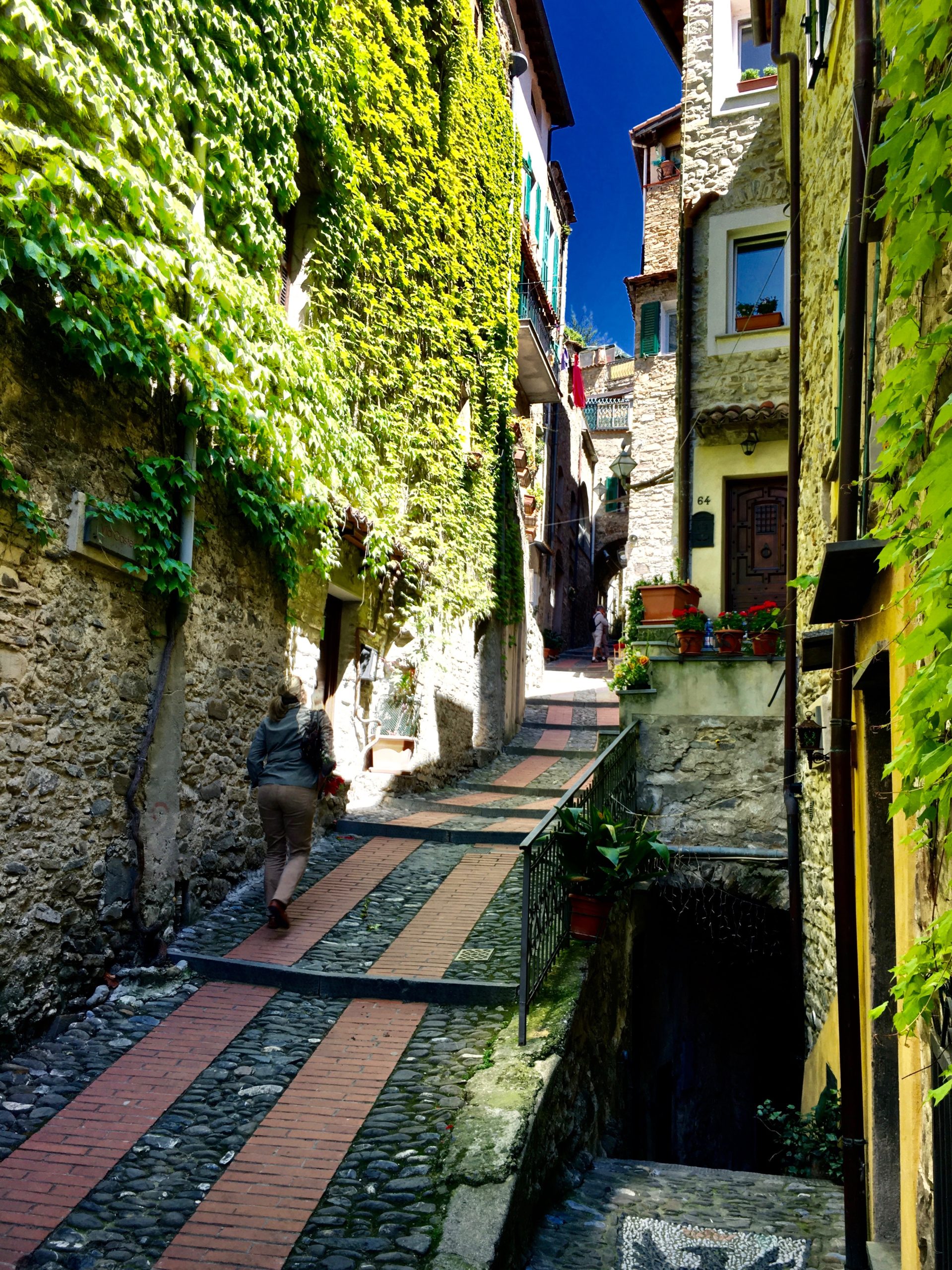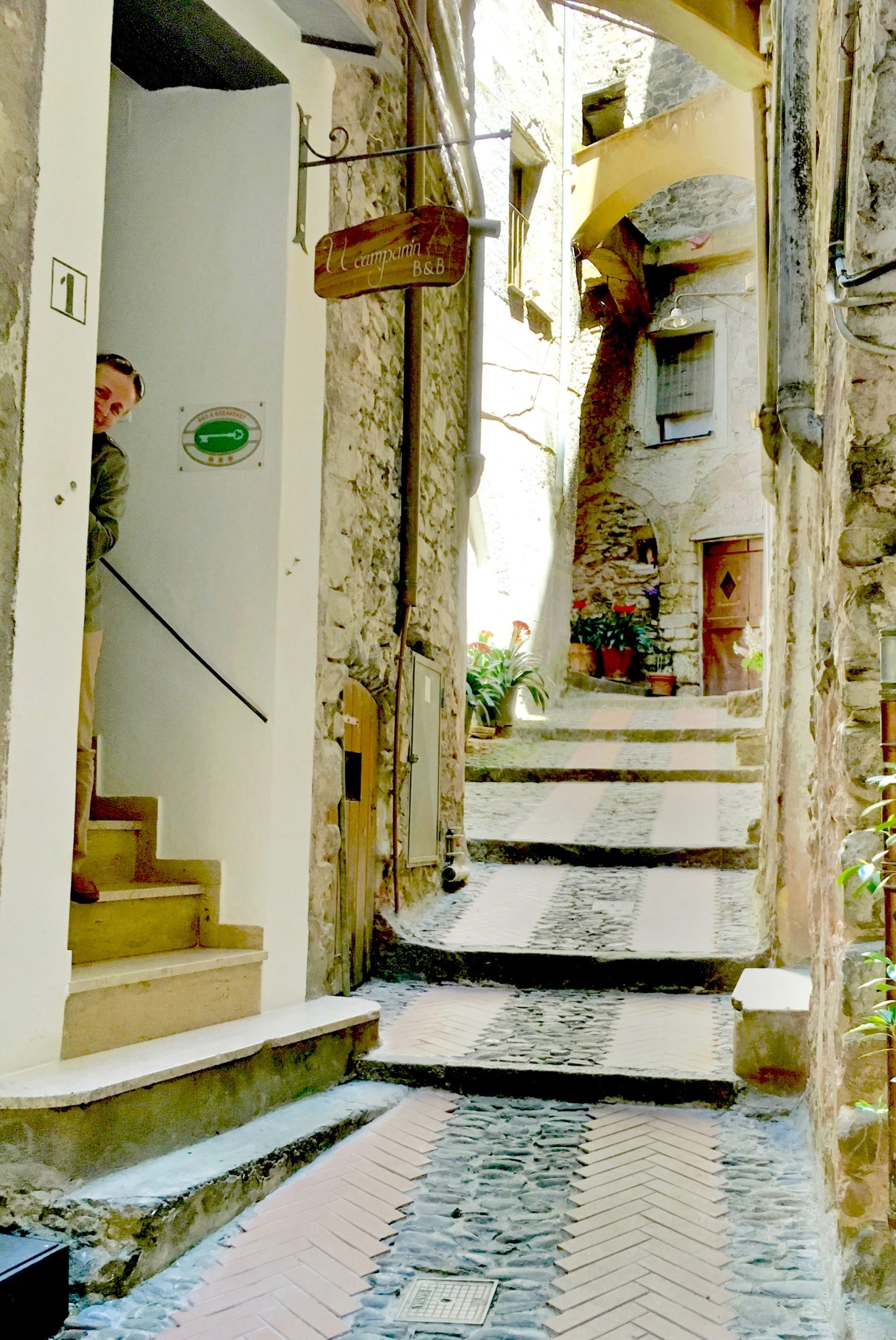A few kilometers inland from the coastal Italian town of Ventimiglia, (which is just minutes from the French border and Monaco), along the river banks of the Nervia river, lies the small town of Dolceacqua. The town has become a popular tourist site because of its ancient medieval town, its lovely stone bridge and for the Doria castle which sits on the hillside behind the town. But it’s also famous for its “michetta” sweet rolls which are connected to a local legend of romance and revenge. It’s a favorite place for us to have lunch after when we visit the markets in Ventimiglia.


The Doria castle dates back to 1177 when it was the residence of the counts of Ventimiglia. It was purchased some time later by the Marquis Roberto Doria, who at the time was expanding his rule along the Nervia river valley.
One of the advantages of being a Marquis is known as “jus prime noctis” or “droit de seigneur”, which allows him to have the first honor with any future bride as her virginity, it seems, belongs to him. This “right” set the scene for a legend about the Marquis, the castle Doria and the town of Dolceacqua.
In the 14th century, a Dolceacqua baker had a beautiful 19-year-old daughter called Lucrezia who was set to marry a local lad called Basso. The Marquis, pleased at how beautiful Lucrezia was, was keen to claim her first.
Lucrezia and Basso tried to hide but the Marquis tracked her down and took her back to his castle. Desperate, she tried to throw herself from the window of a castle tower. The Marquis stopped her, and to subdue her, locked her in the dungeon. She remained steadfast though, and eventually died there of hunger and thirst.
Hearing of the death of the popular girl, the locals had had enough and approached the castle. Basso was able to sneak in and, at knife point, forced the Marquis to abolish the lus primae noctis.

To celebrate the end of such a uncivil cruelty, the village women created a sweet they named “Michetta” (They are suppose to resemble female genitals, but that’s a bit of a stretch). From that day, every year on the 16 of August the village celebrates the “Micheta” by dancing, singing, baking sweets and drinking the local wine. Since then the word “michetta” is continued to be used to define virginity and the female womb.
The ruins of the castle are still there and for a small fee it can be explored. At no cost, and just as interesting, one can explore the streets of the medieval town, where many people still live. The walkways are very narrow and the buildings so close together that at times very little skylight makes it through. Stone and concrete arches are commonly used to keep the buildings from falling onto one another. And there are many tunnels that lead from one building to the next, and so dark that street lights have to be on in the middle of the day in order to make one’s way.
We’ve had lunch at the restaurants in the terrace in front of the town, but weren’t that impressed. We discovered the “Osteria de Catarina”, which is at the base of the medieval village. Cross the main bridge and make a left, down onto a plaza. You’ll find this restaurant tucked away in the right-hand corner, a good location to then walk off your meal afterwards, through the streets of the old town. They have pizza and pastas and a number of other dishes, that looked great on our neighbor’s tables. We had the pizza and it was very tasty with fresh ingredients.
To get to Dolceacqua leaving Ventimiglia going east towards San Remo but turn up and follow the Nervia River. There are roads signs along the way for Dolceacqua.








0 Replies to “Lunch at Dolceacqua, Italy”